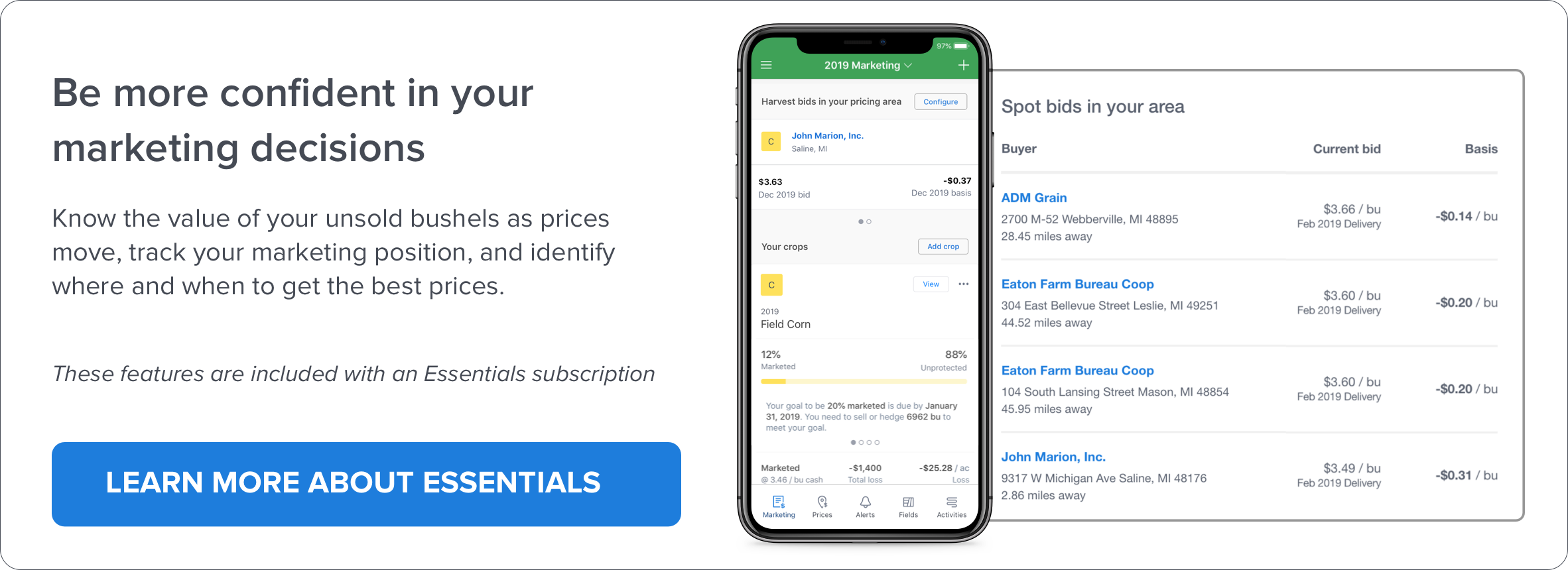Growing the crop and managing input costs is only half of the equation for running a profitable farm... protecting that investment and maximizing the revenue stream it produces for your operation is the only way to ensure you get to keep doing what you love again next year.
"If you’re going to put the time, money and hard work into growing a crop... you need to make sure if pays off for you and your family."
– Jesse Vollmar, FarmLogs Co-Founder & CEO
There’s an old saying in trading that says, "you don’t go broke locking in a profit." Essentially, that’s what crop marketing or livestock marketing comes down to. We don’t have to tell you that production agriculture is full of risks. They start before you even plant the crop, and they often don’t end until well after you’ve harvested. That window involves multiple months (sometimes years) and potential factors affecting yields and prices too numerous to list. Choosing both when and how to market during that cycle is critical to your farm’s financial health.
Marketing may not be as fun as running your combine or planter, but it is every bit as important.
I would bet most of you know more far more about programming the yield monitor in you combine or the GPS system in your sprayer than you do about using futures and options contracts on the board, or accumulator and HTA contracts at your local elevator to manage price risk. Just like you use a number of different tools to evaluate and execute your plan for growing a crop, like choosing different seed hybrids, chemical and fertilizer combinations, and the physical equipment to do the job, there are a number of different tools and techniques available when it comes to marketing grain and managing price risk.
I wish I could tell you that collecting a windfall profit is as easy as selling to the local elevator off the combine in the fall, but it’s usually not.
Futures, options, and other financial (paper) instruments are tools that can be used to augment and enhance the way you’ve traditionally marketed grain and managed price risk. They can create the flexibility to set the price floor while maintaining the ability to participate should markets move higher in the future. Or they can protect price while not locking you into a fixed delivery location or slot. They offer the ability to adjust, reset, or even pull profit out along the way as circumstances change.
Use of such tools may be appropriate at some times, while no better than traditional fixed/forward sales at others.
The key is knowing the difference, and playing with a full arsenal of tools in your role as a ‘marketer’ in what has become a very challenging price environment.
The good news is that your advisors are here to help! I work for Powerline, a company launched in 2003 and based in Champaign, IL. Our focus is to help our customers by taking the firm's collective experience in managing commodity price risk and market volatility and turning that into simple, sound, and practical programs that help enhance bottom line performance. You can learn more about us at www.powerlinegroup.net.
Visit our Crop Marketing Education page for more!
-2.png)

